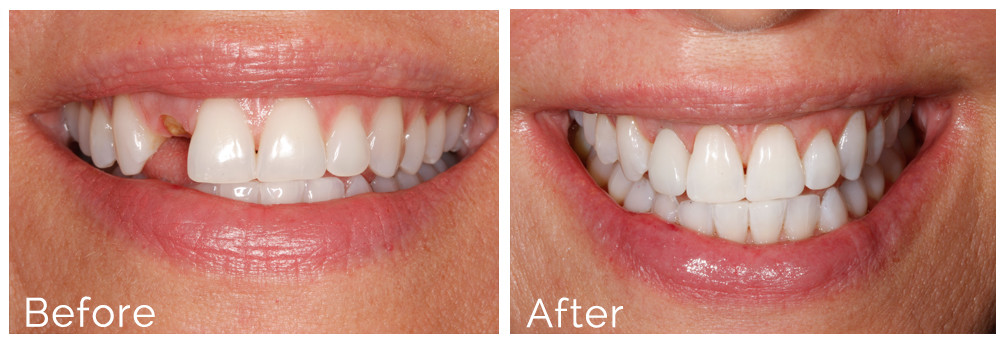The Facts About Dental Sense Uncovered
The Facts About Dental Sense Uncovered
Blog Article
The Basic Principles Of Dental Sense
Table of ContentsNot known Facts About Dental SenseRumored Buzz on Dental SenseTop Guidelines Of Dental SenseThe Buzz on Dental Sense
are clinical gadgets surgically implanted right into the jaw to recover an individual's ability to chew or their appearance. They supply assistance for artificial (phony) teeth, such as crowns, bridges, or dentures. When a tooth is lost as a result of injury or disease, a person can experience issues such as rapid bone loss, malfunctioning speech, or modifications to eating patterns that result in pain.Dental implant systems are composed of a dental implant body and dental implant abutment and might additionally consist of a joint addiction screw. Kids dental. The dental implant body is surgically placed in the jawbone in location of the tooth's root. The dental implant joint is generally attached to the implant body by the joint addiction screw and prolongs through gum tissues into the mouth to support the attached artificial teeth
(https://www.pageorama.com/?p=dentalsense1)Framework of The Dental Implant System picking dental implants, speak to your dental copyright concerning the possible benefits and dangers, and whether you are a prospect for the procedure. Points to consider: Your general health is an essential consider establishing whether you are an excellent prospect for dental implants, just how long it will take to recover, and how much time the implant may remain in area.
Smoking might impact the recovery process and decrease the long-term success of the dental implant. The recovery procedure for the implant body may take numerous months or longer, during which time you typically have a short-term abutment instead of the tooth. the dental implant procedure: Carefully adhere to the dental health directions offered to you by your oral supplier.
What Does Dental Sense Do?
Implant failure can cause the need for one more procedure to deal with or replace the dental implant system. Recovers the ability to eat Brings back aesthetic appearance Helps maintain the jawbone from shrinking because of bone loss Maintains the wellness of the surrounding bone and periodontals Helps maintain adjacent (close-by) teeth secure Boosts lifestyle Damages to bordering natural teeth during implant placement Injury to the surrounding cells throughout surgical procedure, such as sinus perforation Injury during surgical procedure (as an example, crack of bordering jawbone) Inadequate function, such as feeling like the teeth do not bite with each other generally A feeling that the tooth is loose or twisting in place arising from an abutment screw loosening up Implant body failure (looseness of the implant body) due to systemic infection, which might be more probable in patients with unrestrained diabetes due to regional infection in bone and gum tissues sustaining the implant body because of postponed recovery, which might be more probable in individuals that smoke Problem cleaning up the gum tissues around the dental implant, leading to bad oral hygiene Untreated periodontal condition Post-surgical pins and needles because of nerve impingement or damages Constantly alert healthcare providers and imaging technicians that you have dental implants prior to any type of magnetic resonance imaging (MRI) or x-ray procedures.
FDA is not conscious of any kind of adverse occasions reported for MRI or x-ray procedures with oral implants. Oral implants systems are commonly made from products that follow worldwide agreement requirements of the International Company for Standardization (ISO) or ASTM International. These criteria have information of what makes a safe product.

An oral implant is a framework that replaces a missing out on tooth. With screw-like devices, the surgeon inserts a dental implant right into the jawbone, and it acts as a support for an artificial tooth, called a crown. A gadget called an abutment connects the artificial tooth to the dental implant. The crown is custom-made to fit the individual's mouth and match the color of their teeth.
Facts About Dental Sense Uncovered
Some people are not qualified for oral implant surgery. It is for dental specialists to operate people with: severe illnessuncontrollable metabolic diseasebone or soft tissue disease or infectionIf these problems are solved, a person can have the surgical treatment. In, dental surgeons avoid operating on people with: If individuals with any one of the above undergo oral implant surgical treatment, there is a greater threat of the dental implant stopping working.

Oral dental implant surgical procedure is a customized process. Provide you time to heal. Connect the blog post and final crown, bridge or denture.
Next, your surgeon will very carefully place the oral implant right into your jaw. Your specialist will certainly rearrange your periodontals and close the incision with stitches. If your implant is near the front of your mouth, your dental practitioner will make a short-lived tooth for you to wear until you recover. This way, you won't have a void in your smile while you recover.
Fascination About Dental Sense
During the healing phase, your jawbone needs to fuse to the oral implant. This process can take anywhere from three to nine months.
As soon as your dental implant heals, your dentist can affix the joint (tiny port article) and your final repair (crown, bridge or denture). This usually takes about one hour to complete and may call for a second small surgical treatment. You should not feel any discomfort during your dental implant treatment because your supplier will certainly use drug to numb your gums.
Report this page